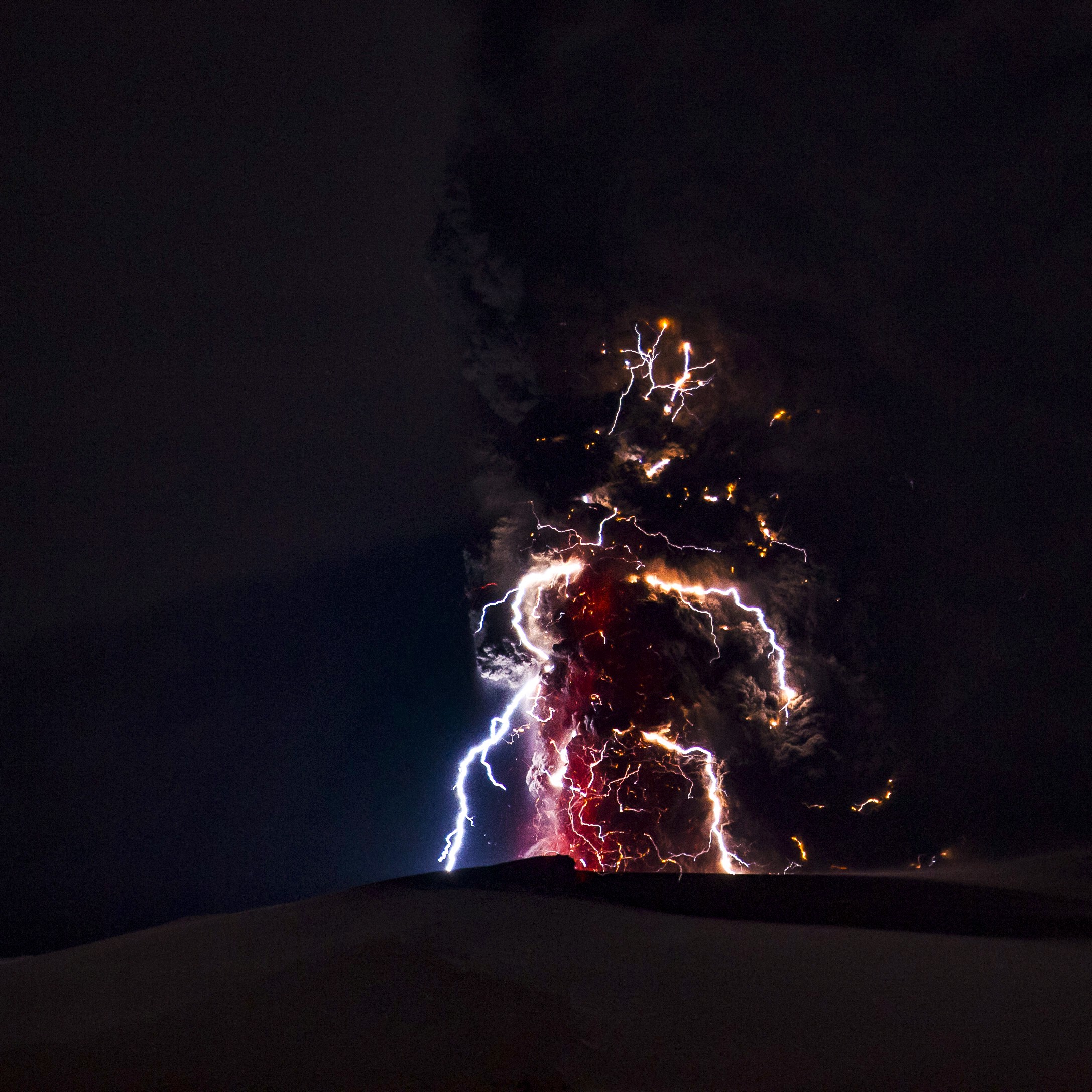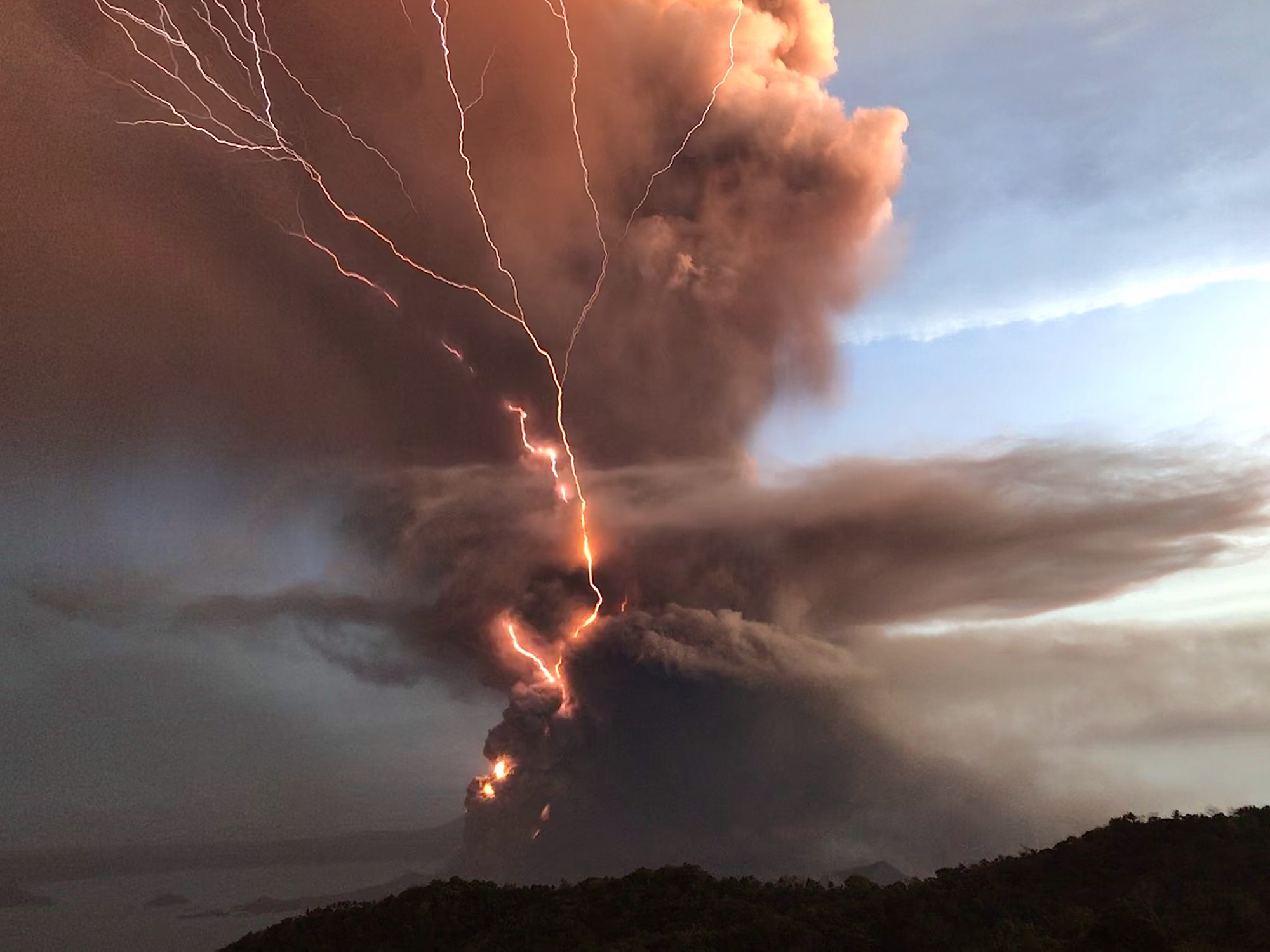Volcanic lightning - what is it and how does it occur?
Volcanoes and lightning are two of the most captivating natural phenomena on Earth. But combine the two and you have something more spectacular and far scarier: volcanic lightning. But what is volcanic lightning and how does it occur?
What is volcanic lightning?
Volcanic lightning happens when a lightning discharge is caused by an explosive volcanic eruption.
Much like regular lightning that forms in the cumulonimbus cloud of a thunderstorm, volcanic lighting appears as a bright electrical discharge originating within a volcanic ash plume.
Volcanic lightning does not occur in all volcanoes but when it does, it can create a frightening scene, especially when it happens at night.

Image: Volcanic lightning in the plume caused by a volcanic eruption beneath the Eyjafjallajökull icecap in April 2010.
What causes volcanic lightning?
The formation of volcanic lightning requires a process called ‘electrification’ to occur within a volcanic ash plume. This involves an electric charge building up in the large column of solid particles, gas and air that forms above an explosive volcanic eruption.
The exact mechanisms that cause electrification in volcanic plumes are still an active area of research. Even though volcanic lightning has been documented for centuries, modern observations have revealed that it can form in multiple ways and under different volcanic conditions.
According to recent research, there are four main mechanisms for electrification in a volcanic plume:
- Fracto-electrification – where charge is produced during the fracturing of materials
- Tribo-electrification – when charging occurs as a result of collision and friction between particles
- Electrification of liquids – where electrification occurs due to the movement of water in its different phases (vapour, liquid and solid) through the volcanic plume
- Natural radioactivity – charge is provided by the radioactive decay of natural radioisotopes

Image: Volcanic lightning during the eruption of the Taal Volcano in the Philippines in 2020.
Types of volcanic lightning
Like regular thunderstorm lightning, volcanic lightning can appear in a few different varieties.
Most volcanic lightning is intra-cloud lightning, meaning the lightning flashes remain within the volcanic ash plume and do not reach the ground.
Some volcanic lightning occurs as cloud-to-ground lightning. As the name suggests, this happens when individual lightning strikes run from the volcanic ash plume to the ground.
Volcanic lightning can also be divided into three types, based on where they occur within the volcanic ash plume:
- Vent discharges – small and brief flashes that occur near the volcano's vent, usually immediately after an explosive eruption
- Near-vent lightning – larger, medium-duration flashes that form above the vent in the first few minutes of an eruption
- Plume lightning – large-scale, long duration lightning that occurs in the plume column and overlying anvil-shaped region, beginning several minutes after the eruption onset
Volcanoes can also help trigger a rare type of lightning called upward lightning, which refers to lightning that is typically triggered by a tall object on the ground when a thunderstorm is overhead. The video below shows what appears to be upward lightning being triggered by the Agua Volcano in Guatemala (note that the Tweet misidentifies it as the Acatenango Volcano).
This isn't an optical illusion! The Acatenango Volcano in Guatemala does produce volcanic lightning. ⚡�🌋 pic.twitter.com/yZu0vvYOjx
— AccuWeather (@accuweather) August 18, 2023
Other uses for volcanic lightning
While volcanic lightning looks scary, it can be very useful to help identify volcanic eruptions and predict their impacts.
Volcanic lightning can be detected using satellites, ground-based thunderstorm detection antennas, microphone arrays, high-speed cameras and seismic instruments.
These techniques allow scientists to use volcanic lightning to detect volcanoes, even when they occur at night or during reduced visibility in adverse weather conditions.